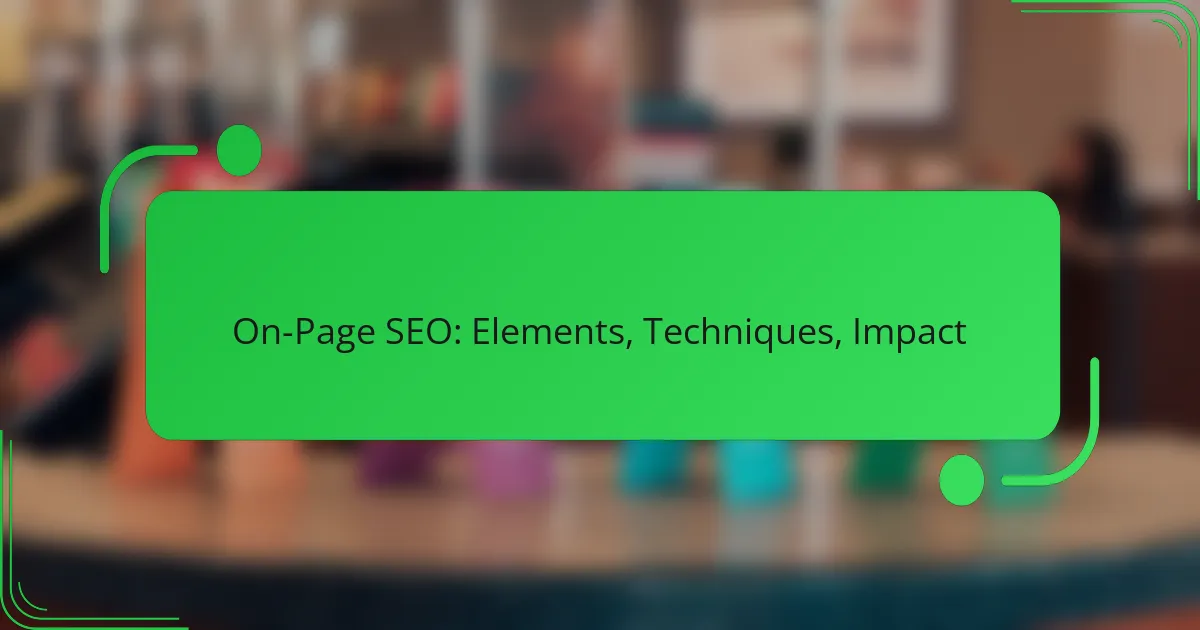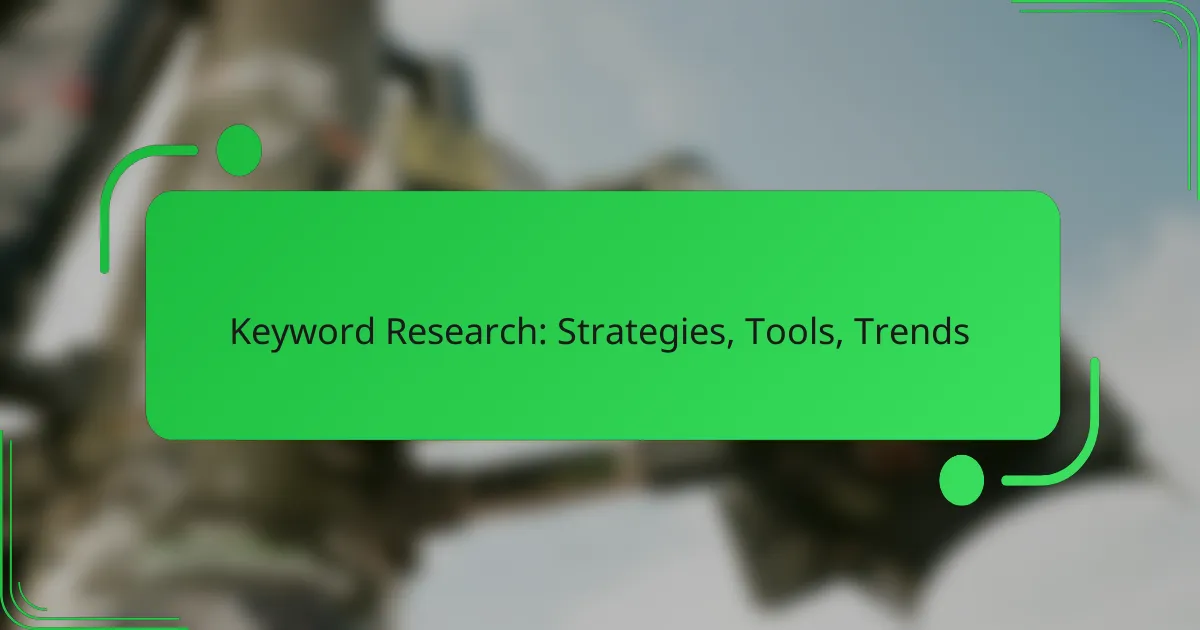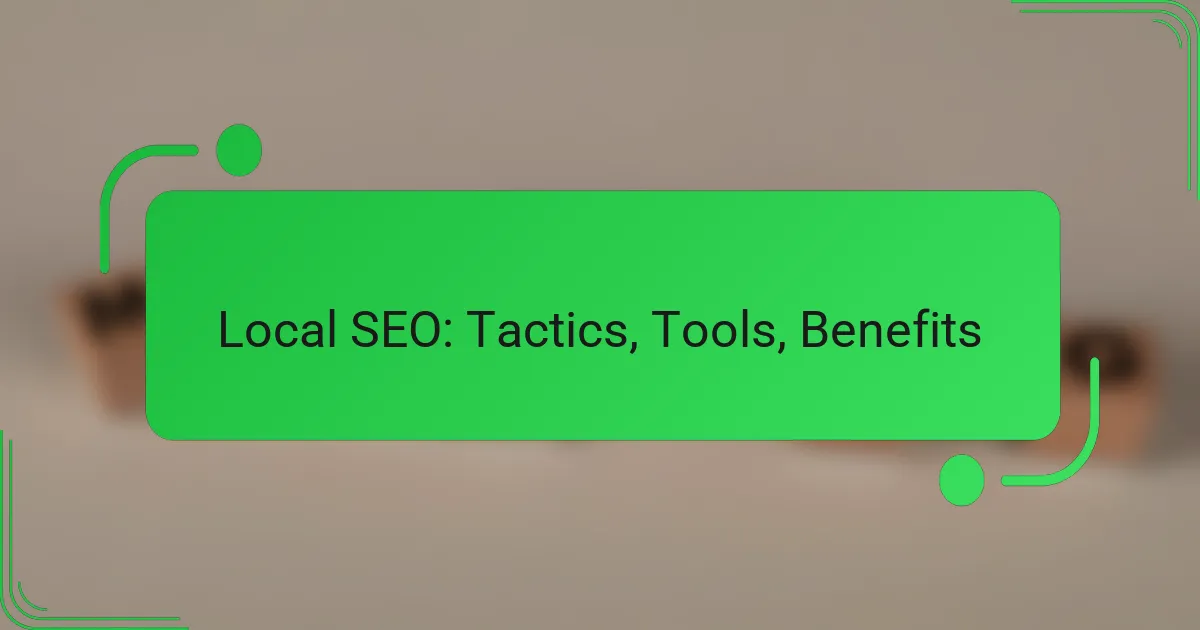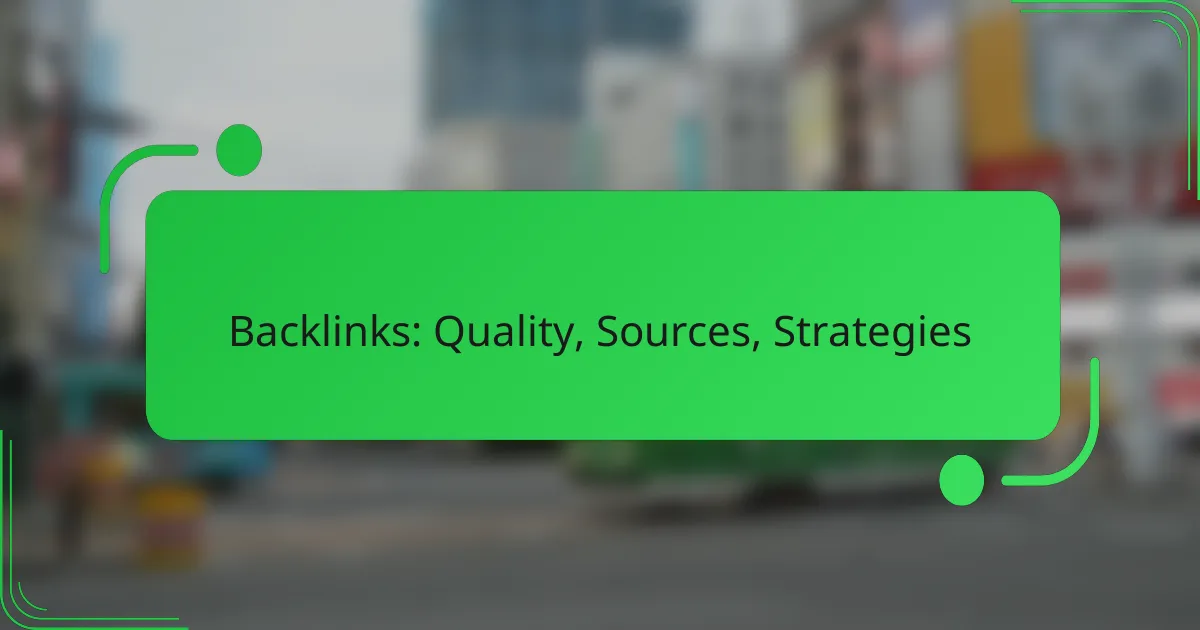On-page SEO is essential for improving a website’s visibility and ranking in search engine results. By focusing on elements such as keyword placement, meta descriptions, and content structure, you can enhance user engagement and drive organic traffic. Additionally, optimizing factors like page load speed and navigation contributes to a better user experience, further boosting your site’s performance.
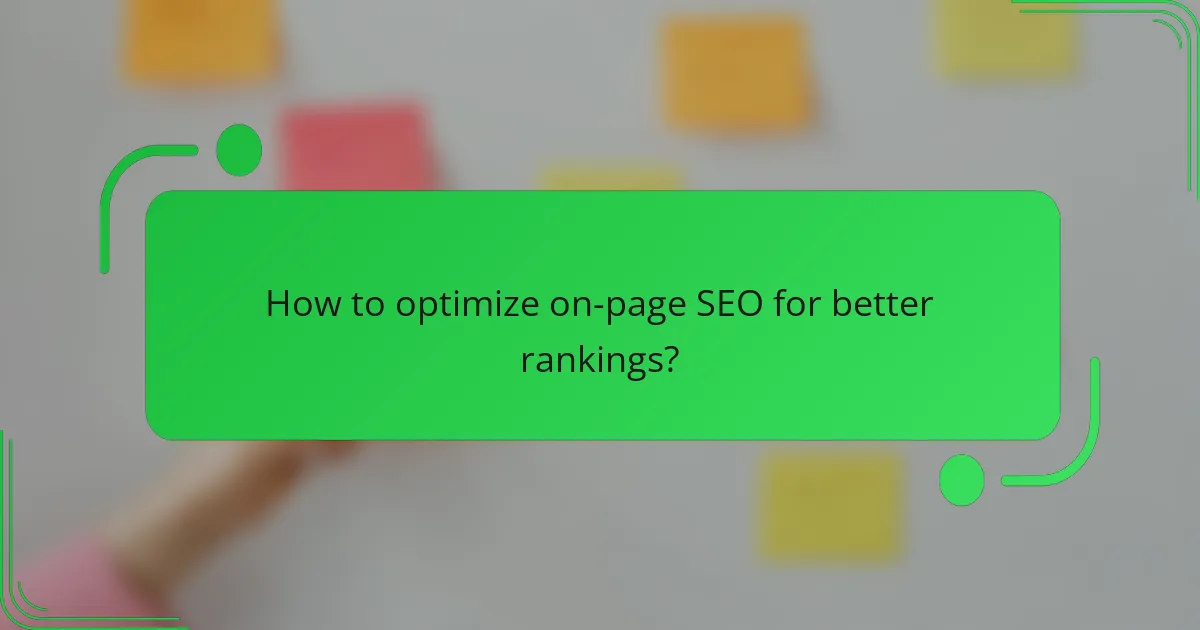
How to optimize on-page SEO for better rankings?
To optimize on-page SEO for better rankings, focus on strategic keyword placement, compelling meta descriptions, and effective content structure. These elements enhance visibility and user engagement, leading to improved search engine performance.
Keyword placement in titles
Keyword placement in titles is crucial for on-page SEO. Ensure that your primary keyword appears at the beginning of the title tag, as search engines prioritize early keywords. Aim for titles that are around 50-60 characters to avoid truncation in search results.
For example, instead of “Best Practices for SEO,” use “SEO Best Practices: Boost Your Rankings.” This approach not only improves relevance but also attracts clicks from users searching for specific information.
Meta descriptions for click-through rates
Meta descriptions serve as a summary of your webpage and can significantly impact click-through rates. Keep them between 150-160 characters, including your target keyword, to ensure they are fully displayed in search results.
Craft compelling descriptions that entice users by highlighting the value of your content. For instance, instead of a generic description, use “Discover proven SEO strategies to elevate your website’s visibility and drive traffic.” This approach encourages users to click on your link.
Header tags for content structure
Header tags (H1, H2, H3) help organize your content and improve readability. Use H1 for the main title and H2 for section headings, incorporating relevant keywords to enhance SEO. This structure allows search engines to understand the hierarchy and relevance of your content.
For example, if your article is about “On-Page SEO Techniques,” your H2s could include “Keyword Placement” and “Meta Descriptions.” This not only aids SEO but also provides a better user experience by making content easier to navigate.
Image optimization for faster loading
Image optimization is essential for faster loading times, which can affect user experience and SEO rankings. Use appropriate file formats like JPEG for photos and PNG for graphics, and compress images to reduce file size without sacrificing quality.
Additionally, include descriptive alt text for each image, incorporating relevant keywords. This practice enhances accessibility and provides context to search engines, improving your overall SEO strategy.
Internal linking strategies
Internal linking strategies help distribute page authority and guide users through your website. Create links to related articles or relevant sections within your content, using descriptive anchor text that includes keywords.
Aim for a balanced approach; too many links can overwhelm users, while too few may hinder navigation. A good rule of thumb is to include 2-5 internal links per article, directing users to valuable resources without detracting from the main content.
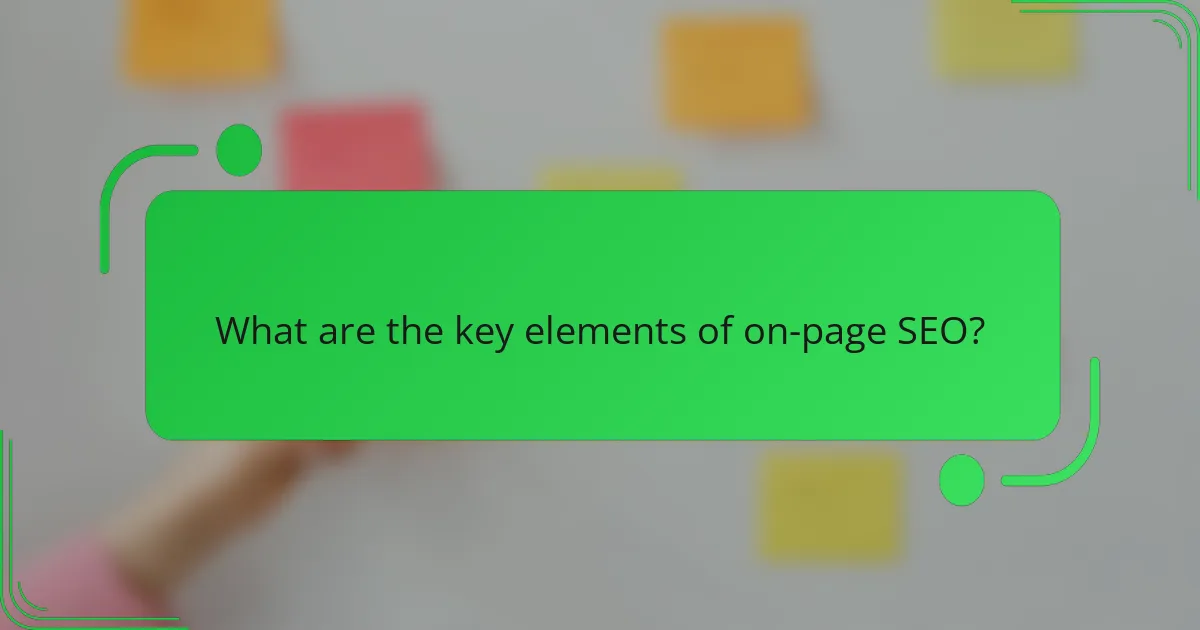
What are the key elements of on-page SEO?
The key elements of on-page SEO include various components that help search engines understand the content and relevance of a webpage. These elements play a crucial role in improving visibility and ranking in search results, ultimately driving organic traffic.
Title tags and their importance
Title tags are HTML elements that define the title of a webpage, appearing in search engine results and browser tabs. A well-crafted title tag should be concise, typically between 50-60 characters, and include relevant keywords to enhance search visibility.
Including your brand name can also help with recognition. Avoid keyword stuffing; instead, focus on creating a compelling title that accurately reflects the content of the page.
Meta tags and descriptions
Meta tags provide metadata about a webpage, with the meta description being particularly important for SEO. This brief summary, usually around 150-160 characters, appears below the title in search results and should entice users to click through.
Incorporate primary keywords naturally and ensure the description accurately represents the page content. A well-written meta description can significantly improve click-through rates.
URL structure best practices
A clean and descriptive URL structure enhances both user experience and SEO. URLs should be short, include relevant keywords, and use hyphens to separate words for better readability.
Avoid using complex parameters or unnecessary characters. For example, a URL like www.example.com/on-page-seo is preferable to www.example.com/page?id=12345.
Content quality and relevance
High-quality, relevant content is fundamental to on-page SEO. Content should be informative, engaging, and tailored to the target audience’s needs. Aim for a minimum of 300 words per page to provide sufficient information.
Regularly update content to keep it fresh and relevant, and use headings and subheadings to improve readability and structure. Incorporating multimedia elements like images or videos can also enhance user engagement.
Mobile-friendliness and responsive design
With a significant portion of web traffic coming from mobile devices, ensuring your site is mobile-friendly is essential for on-page SEO. Responsive design allows your website to adapt to various screen sizes, improving user experience.
Test your site using tools like Google’s Mobile-Friendly Test to identify any issues. Prioritize fast loading times and easy navigation to retain mobile users and reduce bounce rates.
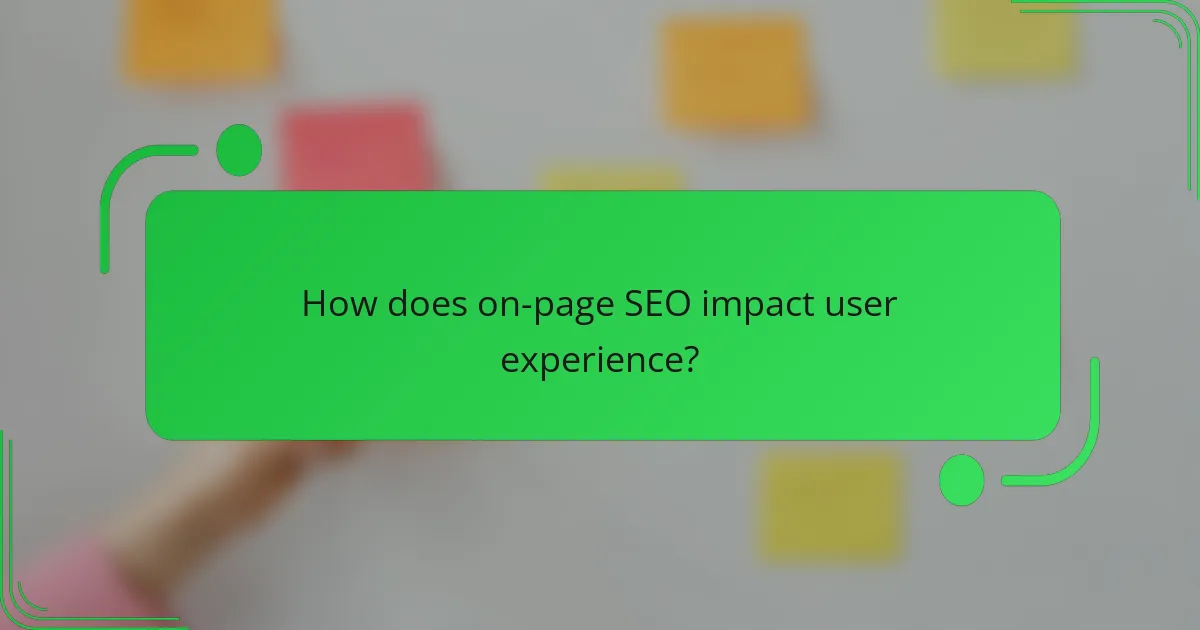
How does on-page SEO impact user experience?
On-page SEO significantly enhances user experience by optimizing elements that affect how visitors interact with a website. Key factors like page load speed, navigation, and content readability directly influence user satisfaction and engagement.
Page load speed effects
Page load speed is crucial for retaining visitors. Studies suggest that if a page takes longer than a few seconds to load, users are likely to abandon it. Aim for a load time of under three seconds to minimize bounce rates and improve user retention.
To enhance load speed, consider optimizing images, leveraging browser caching, and minimizing HTTP requests. Tools like Google PageSpeed Insights can help identify specific areas for improvement.
Navigation and site structure
Effective navigation and a clear site structure are essential for a positive user experience. Users should easily find what they are looking for without excessive clicks or confusion. A well-organized menu and a logical hierarchy can guide visitors smoothly through the site.
Utilize breadcrumb navigation and a search function to further assist users in locating content. Regularly testing your site’s navigation with real users can reveal pain points and areas for enhancement.
Content readability and engagement
Readability directly affects how users engage with your content. Use clear, concise language and break up text with headings, bullet points, and images to maintain interest. Aim for a reading level that matches your audience’s expectations.
Incorporate interactive elements like quizzes or polls to boost engagement. Regularly updating content to keep it fresh and relevant can also encourage users to return, enhancing overall user experience.
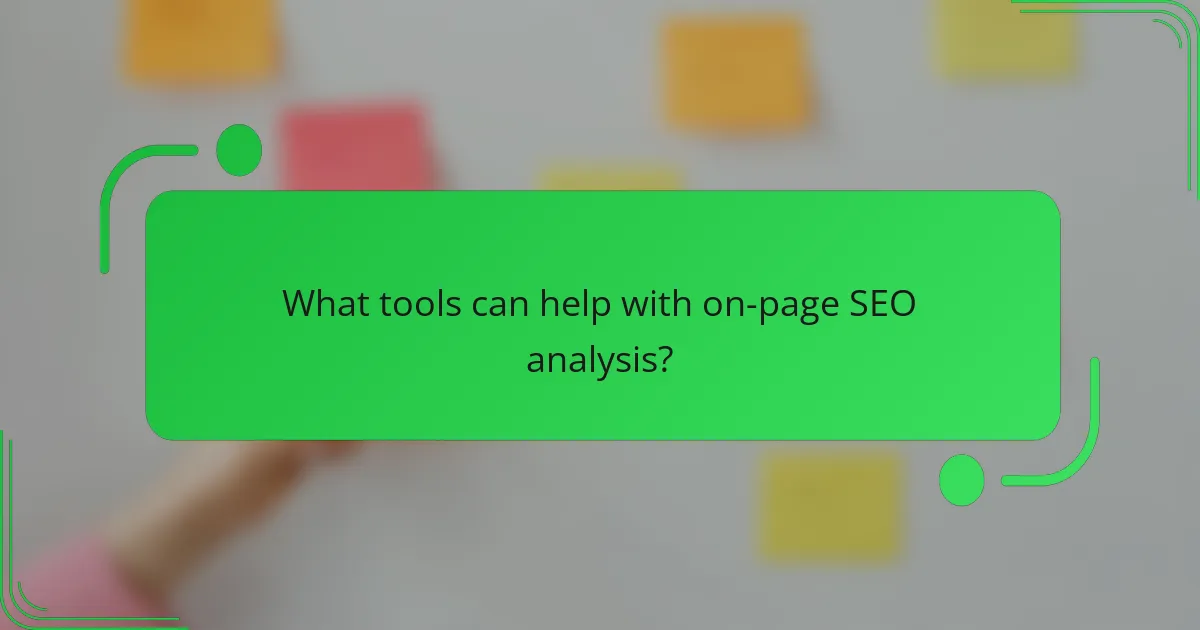
What tools can help with on-page SEO analysis?
Several tools can significantly enhance on-page SEO analysis by providing insights into keyword optimization, content quality, and performance metrics. Utilizing these tools can help identify areas for improvement and track progress over time.
SEMrush for keyword research
SEMrush is a comprehensive tool that excels in keyword research, allowing users to find relevant keywords based on search volume, competition, and trends. By inputting a seed keyword, you can discover long-tail variations and related terms that may enhance your content strategy.
Additionally, SEMrush offers features like keyword difficulty scores and SERP analysis, which help you gauge how challenging it might be to rank for specific keywords. This data is crucial for prioritizing your SEO efforts effectively.
Yoast SEO for WordPress
Yoast SEO is a popular plugin for WordPress that simplifies on-page SEO optimization. It provides real-time feedback on your content, focusing on keyword usage, readability, and meta descriptions. This guidance helps ensure your posts are both user-friendly and optimized for search engines.
One key feature is the ability to set focus keywords and receive suggestions for improving your content based on those keywords. This can help you avoid common pitfalls, such as keyword stuffing or neglecting important SEO elements.
Google Search Console for performance tracking
Google Search Console is an essential tool for monitoring your website’s performance in search results. It provides insights into how your site appears in Google searches, including click-through rates, impressions, and average position for various queries.
Using this tool, you can identify which pages are performing well and which need improvement. Regularly checking your Search Console data can help you adjust your on-page SEO strategies based on real user behavior and search trends.
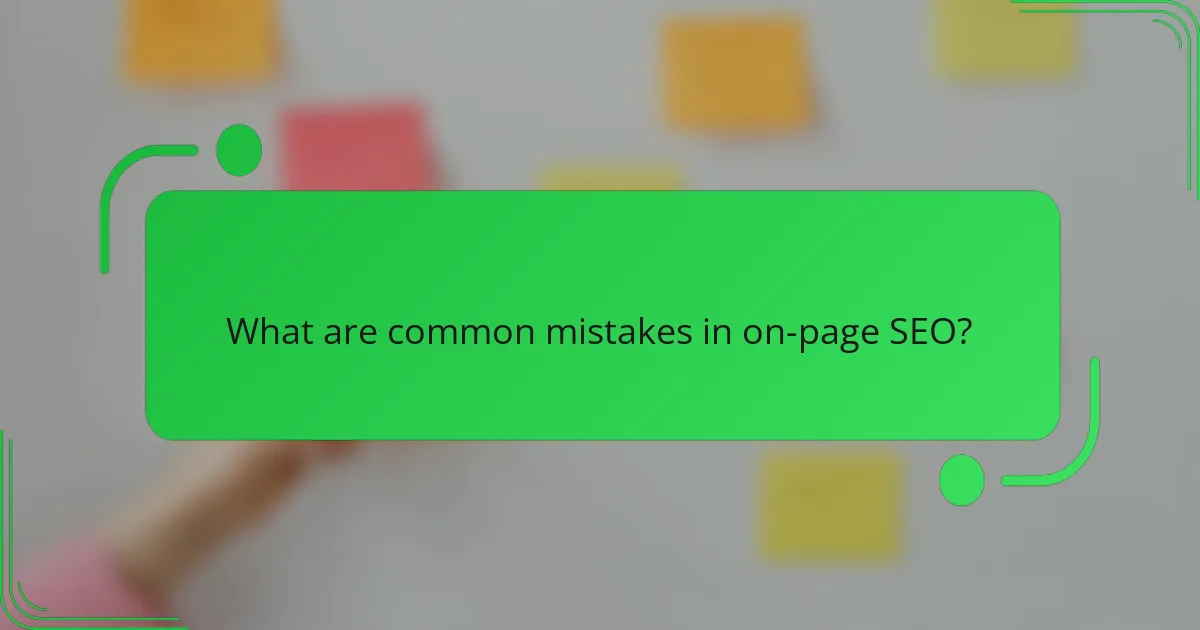
What are common mistakes in on-page SEO?
Common mistakes in on-page SEO can significantly hinder a website’s performance in search engine rankings. Addressing these issues is crucial for optimizing visibility and user experience.
Ignoring mobile optimization
Ignoring mobile optimization can lead to a poor user experience for the increasing number of users accessing websites via mobile devices. A responsive design that adapts to various screen sizes is essential for retaining visitors and improving search rankings.
To ensure mobile optimization, test your website on different devices and screen sizes. Use tools like Google’s Mobile-Friendly Test to identify and rectify issues that could affect usability.
Overstuffing keywords
Overstuffing keywords refers to the practice of excessively using targeted keywords in content, which can lead to penalties from search engines. Instead of improving rankings, this tactic often results in lower visibility and a negative user experience.
Focus on natural language and context. Aim for a keyword density of around 1-2%, and prioritize user engagement by providing valuable content that addresses their needs.
Neglecting meta tags
Neglecting meta tags, such as title tags and meta descriptions, can result in missed opportunities for improving click-through rates. These tags provide essential information to search engines and users about the content of a page.
Ensure each page has unique and descriptive meta tags that accurately reflect the content. Aim for title tags under 60 characters and meta descriptions around 150-160 characters to maximize visibility in search results.
